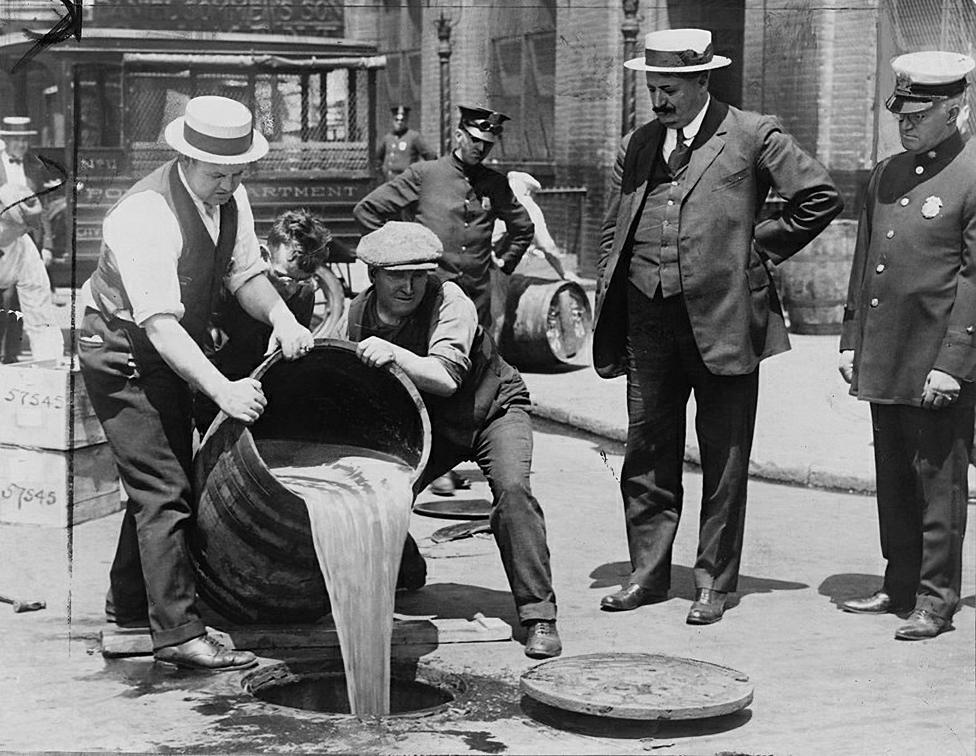Americans and Prohibition
Published July 22, 2020

United States
At the beginning of the seventeenth century it’s fair to say Europe was not at its peak, famines, war and repressions led many of its citizens to emigrate to other countries and the New World was often seen as a place full of possibilities. Among the migrants there were also Scots and Irish, who in addition to their luggage, they also carried the secrets of distillation.
The first settlers
Initially Scots and Irish settled on the east coast of the New World, they founded the states of Maryland, Virginia, North Carolina and Pennsylvania. Unlike the Old World, the United States was not rich in malt and the new colonists adapted to growing rye and corn, Beer being difficult to transport and more easily spoiled was further distilled to create whiskey. In 1771 there were already several whiskey producers, although none on an industrial level. Whisky production was so rampant so that the federal government decided to tax distillates, resulting in what has gone down in history as the “whiskey rebellion”. The Pennsylvania distillers responded with violence and intimidation of the federal agents and it took the intervention of George Washington to restore order.
George Washington the first president of the United States of America
Ironically in 1797 George Washington left politics and pursued one of his passions by building a distillery near Mount Vernon. The distillery is equipped with 5 stills and produced using whiskey, rye and barley. In the first year alone, 4,000 liters of distillate are produced and sold. Only two years later, however, in December 1799 following his death the distillery passed to his nephew who managed it until its definitive closure (1815).
The start of an industry and the Secession War
In 1802 the newly elected Thomas Jefferson abolished all taxes on whiskey and starting from 1840 the Bourbon was recognized and marketed as a characteristic type of American whiskey. The Americans adopted the continuous still designed by Aeneas Coffey (former Irish customs officer) who had already decreed the fortunes of the Scottish producers and ditched that of the Irish, the distillate is now produced in Kentucky, Tennessee, Indiana, Illinois, Ohio, Missouri, Pennsylvania, North Carolina and Georgia.
In 1861 the outbreak of the Civil War and the introduction of new taxes for funding the war interrupted the development of US distillates, that’s when they made the appearance of the bootleggers who hid in leggings (leggers) of their boots (boot) the smuggled whiskey for sale to northern and southern soldiers.
The 1920s and Prohibition
At the end of the war, the distilleries began to grow again with renewed vigor until 17 January 1920 when the 18th amendment sanctioning Prohibition became operative. It seemed a victory for the proponents of the provision (religious groups, women and non-alcoholic leagues) but if on one hand the distilleries were largely dismantled on the other it favored the development of a real underground industry.
The United States was flooded with illegal alcohol, coming both from Europe (mainly from Scotland via Canada) and produced internally, the quality was poor not to mention that the United States lost about 14% of the revenues deriving from the taxation of alcohol. The production and distribution of smuggled alcohol was soon controlled by organized crime which had immense profits and the American government had to invest large sums of money to counteract its activities to expand the staff of its Bureaus. There are those who think that modern American organized crime was born precisely with the gains derived from Prohibition.
The American challenge
Even with the end of Prohibition decreed by the XXI amendment many of the old distilleries did not reopen, but the American whiskey industry began a slow consolidation, after the Second World War the production returned to normal and today American whiskey seems to have won its challenge . For some years now distilleries such as Jim Bean, Maker’s Mark or Buffalo Trace have been offering an excellent quality Bourbons, Ryes and even single malts.

